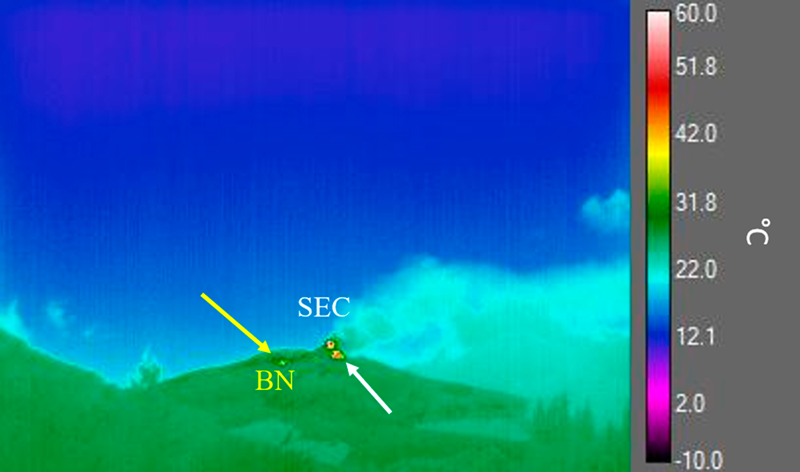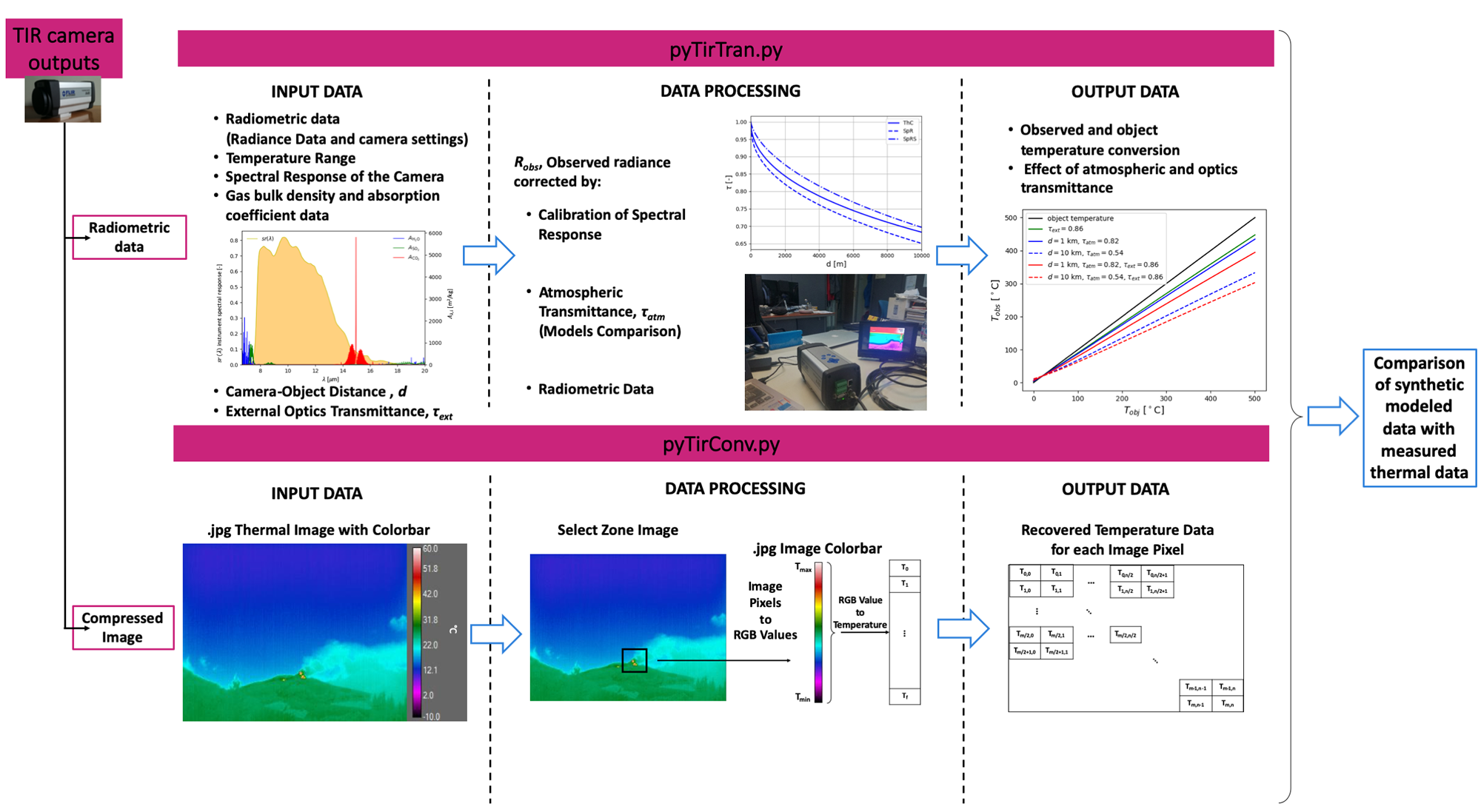PyTirCam-1.0: A Python Model to Manage Thermal Infrared Camera Data

Calusi B., D. Andronico, E. Pecora, E. Biale and M. Cerminara (2020)
Remote Sensing, 12/24, 4056, https://doi.org/10.3390/rs12244056
Abstract
Thermal-infrared remote sensing is used to monitor and study hazardous volcanic phenomena. Thermal cameras are often used by monitoring centers and laboratories. A physical comprehension of their behavior is needed to perform quantitative measurements, which are strongly dependent on camera features and settings. This makes it possible to control the radiance measurements related to volcanic processes and, thus, to detect thermal anomalies, validate models, and extract source parameters. We review the theoretical background related to the camera behavior beside the main features affecting thermal measurements: Atmospheric transmission, object emissivity and reflectivity, camera characteristics, and external optics. We develop a Python package, PythTirCam-1.0, containing pyTirTran, a radiative transfer model based on the HITRAN database and the camera spectral response. This model is compared with the empirical algorithm implemented into a commercial camera. These two procedures are validated using a simple experiment involving pyTirConv, an algorithm developed to recover the radiometric thermal data from compressed images collected by monitoring centers. Python scripts corresponding to the described methods are provided as open-source code. This study can be applied to a wide variety of applications and, specifically, to different volcanic processes, from earth and space.



Devi effettuare l'accesso per postare un commento.